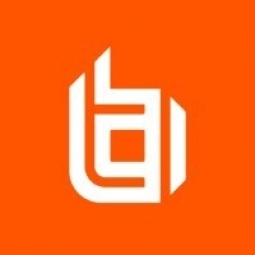Customer Company Size
Large Corporate
Country
- Australia
Product
- Bomgar
Tech Stack
- Remote Support Solutions
Implementation Scale
- Enterprise-wide Deployment
Impact Metrics
- Customer Satisfaction
- Productivity Improvements
Technology Category
- Application Infrastructure & Middleware - API Integration & Management
Applicable Industries
- Education
Use Cases
- Remote Collaboration
- Remote Control
Services
- System Integration
About The Customer
Flinders University is a well-established institution in Adelaide, South Australia. It was founded in 1966 and named after the English navigator Matthew Flinders who explored and surveyed the southern Australian coastline in 1802. The university started with 90 staff members and 400 students and has since grown to approximately 2,500 staff and 20,000 students. Flinders University is renowned for the quality and innovation in its courses and its emphasis on research. It offers a wide range of undergraduate and postgraduate courses at its main campus, as well as at other locations in Australia and across the globe.
The Challenge
Flinders University, a well-established institution in Adelaide, South Australia, was facing challenges with its IT support system. The university's multiple IT departments were using a variety of remote support solutions, depending on the type of device or operating system the user had. This required the support technicians to be familiar with all these tools and to ask users several questions to determine which remote support tool to use to solve the problem. The technical support teams also operated in a siloed fashion, resulting in inefficiencies and slower response times to users. Additionally, there was no tracking or reporting for remote support activities. The university needed a solution that would consolidate their remote support system, improve efficiency, and enhance collaboration.
The Solution
In 2009, Steve Trickey joined Flinders University as the IT Client Services manager and identified the need for a common remote support solution to consolidate the three support teams and improve efficiency and collaboration. After researching the products available, they narrowed the selection down to three, including Bomgar. The team identified several important features they were looking for in a remote support solution. They wanted a tool that would increase efficiencies, support both Windows and Mac operating systems, be reliable, easy to use, and have the ability to monitor and report on sessions. After testing Bomgar along with Citrix GoToAssist Corporate and LogMeIn Rescue, Bomgar stood out as the one solution that met all of their requirements.
Operational Impact
Quantitative Benefit

Case Study missing?
Start adding your own!
Register with your work email and create a new case study profile for your business.
Related Case Studies.

Case Study
Revolutionizing Medical Training in India: GSL Smart Lab and the LAP Mentor
The GSL SMART Lab, a collective effort of the GSL College of Medicine and the GSL College of Nursing and Health Science, was facing a challenge in providing superior training to healthcare professionals. As clinical medicine was becoming more focused on patient safety and quality of care, the need for medical simulation to bridge the educational gap between the classroom and the clinical environment was becoming increasingly apparent. Dr. Sandeep Ganni, the director of the GSL SMART Lab, envisioned a world-class surgical and medical training center where physicians and healthcare professionals could learn skills through simulation training. He was looking for different simulators for different specialties to provide both basic and advanced simulation training. For laparoscopic surgery, he was interested in a high fidelity simulator that could provide basic surgical and suturing skills training for international accreditation as well as specific hands-on training in complex laparoscopic procedures for practicing physicians in India.

Case Study
IoT platform Enables Safety Solutions for U.S. School Districts
Designed to alert drivers when schoolchildren are present, especially in low-visibility conditions, school-zone flasher signals are typically updated manually at each school. The switching is based on the school calendar and manually changed when an unexpected early dismissal occurs, as in the case of a weather-event altering the normal schedule. The process to reprogram the flashers requires a significant effort by school district personnel to implement due to the large number of warning flashers installed across an entire school district.

Case Study
Implementing Robotic Surgery Training Simulator for Enhanced Surgical Proficiency
Fundacio Puigvert, a leading European medical center specializing in Urology, Nephrology, and Andrology, faced a significant challenge in training its surgical residents. The institution recognized the need for a more standardized and comprehensive training curriculum, particularly in the area of robotic surgery. The challenge was underscored by two independent studies showing that less than 5% of residents in Italian and German residency programs could perform major or complex procedures by the end of their residency. The institution sought to establish a virtual reality simulation lab that would include endourological, laparoscopic, and robotic platforms. However, they needed a simulator that could replicate both the hardware and software of the robotic Da Vinci console used in the operating room, without being connected to the actual physical console. They also required a system that could provide both basic and advanced simulation training, and a metrics system to assess the proficiency of the trainees before they performed surgical procedures in the operating theater.

Case Study
Edinburgh Napier University streamlines long-distance learning with Cisco WebEX
• Geographically dispersed campus made in-person meetings costly and inconvenient.• Distance-learning programs in Malaysia, India, and China required dependable, user-friendly online tools to maximize interaction in collaborative workspaces.• Virtual learning environment required a separate sign-in process, resulting in a significant administrative burden for IT staff and limited adoption of collaboration technology.

Case Study
8x increased productivity with VKS
Before VKS, a teacher would spend a lot of time showing a group of 22 students how to build a set of stairs within a semester of 120 hours. Along with not leaving the teacher much time to provide one-on-one support for each student to properly learn carpentry, it also left a considerable amount of room for error. Key information would be misinterpreted or lost as the class was taught in the typical show-and-tell way.

Case Study
Scalable IoT Empowering GreenFlex's Sustainable Growth
GreenFlex, a company that supports sustainable development, decarbonization, and energy efficiency, faced several challenges in its quest to expand its business. The company needed to deploy a robust and sustainable IoT technology to support its growth. It was crucial for them to monitor and control devices at customer sites in a safe and reliable manner. They also needed to integrate devices across a range of communication protocols and gather and act on data to meet efficiency targets. GreenFlex had previously built IoT capabilities into its digital platform, GreenFlexIQ, to monitor and manage customer sites remotely. However, they soon realized that they needed a new platform to support their ambitions. They needed a platform that could scale to connect more devices for production management and make it easier for the operations team to manage devices in the field.







